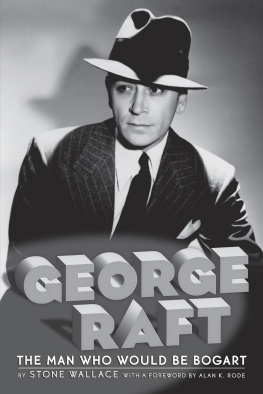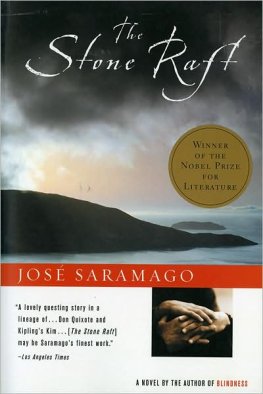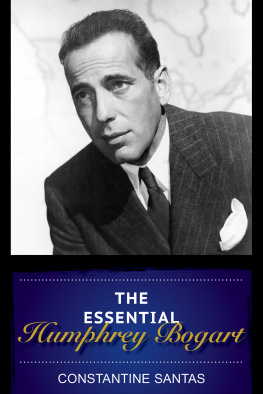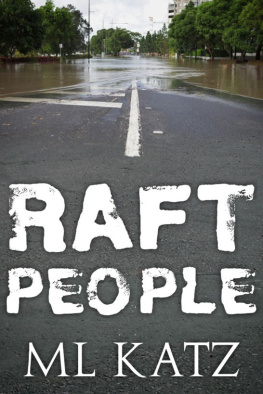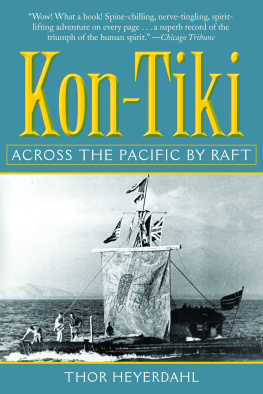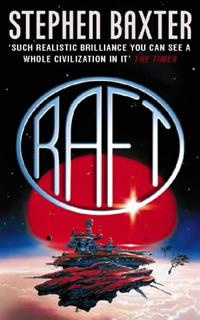To fellow author, John ODowd, whose friendship and unwavering encouragement during the writing of this book helped make it possible.
Acknowledgments
Long before I conceived of the idea to write a biography of George Raft, I had the opportunity while on trips to California to meet and speak with some of the people who had either worked with Raft or knew him socially. In each case my fascination with, and admiration for, George Raft prompted me at some point in each conversation to ask questions concerning professional and/or personal feelings toward Raft. Little did I know that some thirty-plus years later some of those generous comments and observations would find a permanent home in this project. In that category of contributor I gratefully acknowledge: the late Jack LaRue, the late Mike Mazurki and, most especially, the late Lloyd Nolan. Movie tough guys each, but gentlemen all.
To those who graciously offered recollections of Raft during the writing of this book, I thank: Margia Dean, Dolores Fuller, Coleen Gray, the late Kevin Hagen, Sybil Jason, the late Frances Langford, the late Marc Lawrence, the late Janet Leigh, Harry Morgan, Nehemiah Persoff, the late Liz Renay, Francesca Robinson-Sanchez, the late Frankie Thomas, Michelle Phillips, Audrey Totter and special thanks to Dr. Lewis Yablonsky for his generous insights into the George Raft he knew.
Id like to extend a very special thank you to Mack and Joe Grays nephews Robert Davidson and Martin Abrahams, along with Al Smiley and Lucille Caseys daughter Luellen Smiley. Your generosity is much appreciated.
I also want to extend my appreciation for the help, support and encouragement of Silver Screen Audio host Joel Blumberg; Dr. Philip Chamberlin, former director of the Academy of Motion Picture Arts and Sciences; Kit Parker of Kit Parker Films, who provided information on Rafts Lippert pictures; my fellow biographers John ODowd, Robert Nott and Alan K. Rode (thanks, guys!); Tracy Toutant, who helped with the technical requirements of many of the photographs; my publisher Ben Ohmart (the best!); and to my darling Cindy, who is the wind beneath my wings. I love you.
Foreword
My mother, who grew up in Hollywood during the so-called Golden Age, told me a story once about a friend of hers that was smitten with George Raft. The punch line was that after years of silver screen idol worship, Mothers girlfriend was waiting under a bus stop in a driving rainstorm when Raft suddenly pulled up in a coupe and gentlemanly offered her a ride home. As if struck by lightning, the lady became a vocal paralytic and frantically signaled Raft that she was okay and didnt require a lift. After determining that the woman wasnt having an epileptic fit, George finally shrugged and drove off, leaving one of his biggest fans to wait in a downpour. I asked how anybody could be that taken with George Raft; after all, everyone knew he was a terrible actor. Mothers answer was telling. George Raft was a big star.
George Rafts movie career was an emblematic outcome of the studio system jump-starting a career for a most reluctant actor. While Rafts acting is universally viewed by contemporary critics through a prism of sarcastic contempt, his popularity during the 1930s through the war years was undeniable. Once Howard Hawks had him flip that coin in Scarface (1932), George Raft became cemented in the public eye with Paramount and then Warner Brothers eagerly laying the iconic brickwork.
While the studio PR build-up leveraged his visual appeal into stardom, Raft knew from day one that he was no actor. After watching Paul Muni wrench his guts out during Scarface, Raft reportedly said, If I had to do that to be an actor, Id quit. He protected himself accordingly. Although he picked up some vocational tradecraft through his considerable dancing skills and rote iteration, moving well, touching his hat, and snapping off pithy dialogue, George Rafts major career concern was not to look like a fool. Peter Lorre called movie acting face making. Raft strove to present a solitary visage to the public; visually striking yet monosyllabically robotic. If John Barrymore was The Great Profile, George Raft could be dubbed The Cigar Store Indian.
Many film historians, not unjustly, have made the case that Raft mismanaged his acting career with his prominent rejections of Dead End, The Maltese Falcon, High Sierra, and Double Indemnity. (Note: the story that Raft turned down playing Rick in Casablanca is a bum rap it never happened. The picture was designed by Hal Wallis specifically for Humphrey Bogart from day one.) Raft retrospectively divided the blame for his career obtuseness between his agent and own lack of professional foresight. After becoming a star, Raft seemingly navigated his way through his chosen profession as if a blindfolded man traversing a minefield. But it wasnt really a choice. One has to possess both the opportunity and desire in a given career in order to screw it up. He certainly had the opportunity to become a respected film actor, but assiduously avoided anything that smacked of risk, taint or effort. For George Raft, avoidance of acting was a guarantee of continued success.
Much of Rafts Armageddon-like career management was rooted in his unshakeable image of himself, which was also how he thought the public would perceive him. George Raft was an urban child spawned during the nineteenth century who came up the hard way. Somewhat analogous to the cinematic hard-boiled private eye, he lived by his own uncompromising standards of conduct and behavior. Raft couldnt play the cuckolded lover who teams up with Barbara Stanwyck to murder her husband in Double Indemnity any more than he could get divorced from a loveless, forgotten wife to marry the love-of-his-life, Betty Grable. With an eye cocked on his image and fear of professional risk governing his career decisions, Rafts personal life became his virtual role of a lifetime, eclipsing any part that he essayed on screen.
From growing up in Hells Kitchen and palling around with Owney Madden to being a dancing gigolo and later hobnobbing in Hollywood with the notorious Bugsy Siegel, Rafts curriculum vitae became comprised not of memorable movie performances but the Guys and Dolls adventures of a legit star-gangster-lover. The backroom stories were never about the historic proportions of a ruthless, super-charged ego in quest of epic film roles. George Raft gossip concerned the censurable adventures of a loyal, friendly gentleman whose fuel-injected libido was complemented by legendary genitalia. It is somehow poetically ironic that Rafts fulsome life would get made into a cheaply trite movie, The George Raft Story in 1961. Hollywood never could get the real thing done right, even for as distinguished an alumnus as Raft, who sold off the rights to himself when he was desperate for cash.
By the time the cinematic version of his life hit the screen, George Raft was reduced to self-parody in order to earn a living. He had been a relentless high-liver: big houses, endless dames, betting the ponies, propping up friends and always picking up the check. The huge sums he earned as a movie star were relentlessly consumed by a fantastic lifestyle with Raft starring in dual roles as Robin Hood and Bacchus. His true-life gangster image was always a front, but in the latter stages it was parlayed into work as a greeter at mob-controlled casinos in Cuba and England with occasional cameo roles in mostly forgettable pictures. In the end, it was the four packs a day of Luckies for sixty years that finally did him in. Unlike his friend, Ben Siegel, Raft died both with dignity and in bed.
George Raft left us with a legacy of films that are representative of an era, many of which continue hold up well. Nearly three decades after his death, Raft on screen is frequently imbued with a quality that eluded him during his lifetime: authenticity. It is the reality brought not by an actor, but a personage. As Stone Wallace brings to life in his superb biography, Rafts persona in the public consciousness has outlived his studious avoidance of serious acting while transcending surfeit criticism. George Raft endures as a seminal American movie star whose life and films are worthy of our attention.

